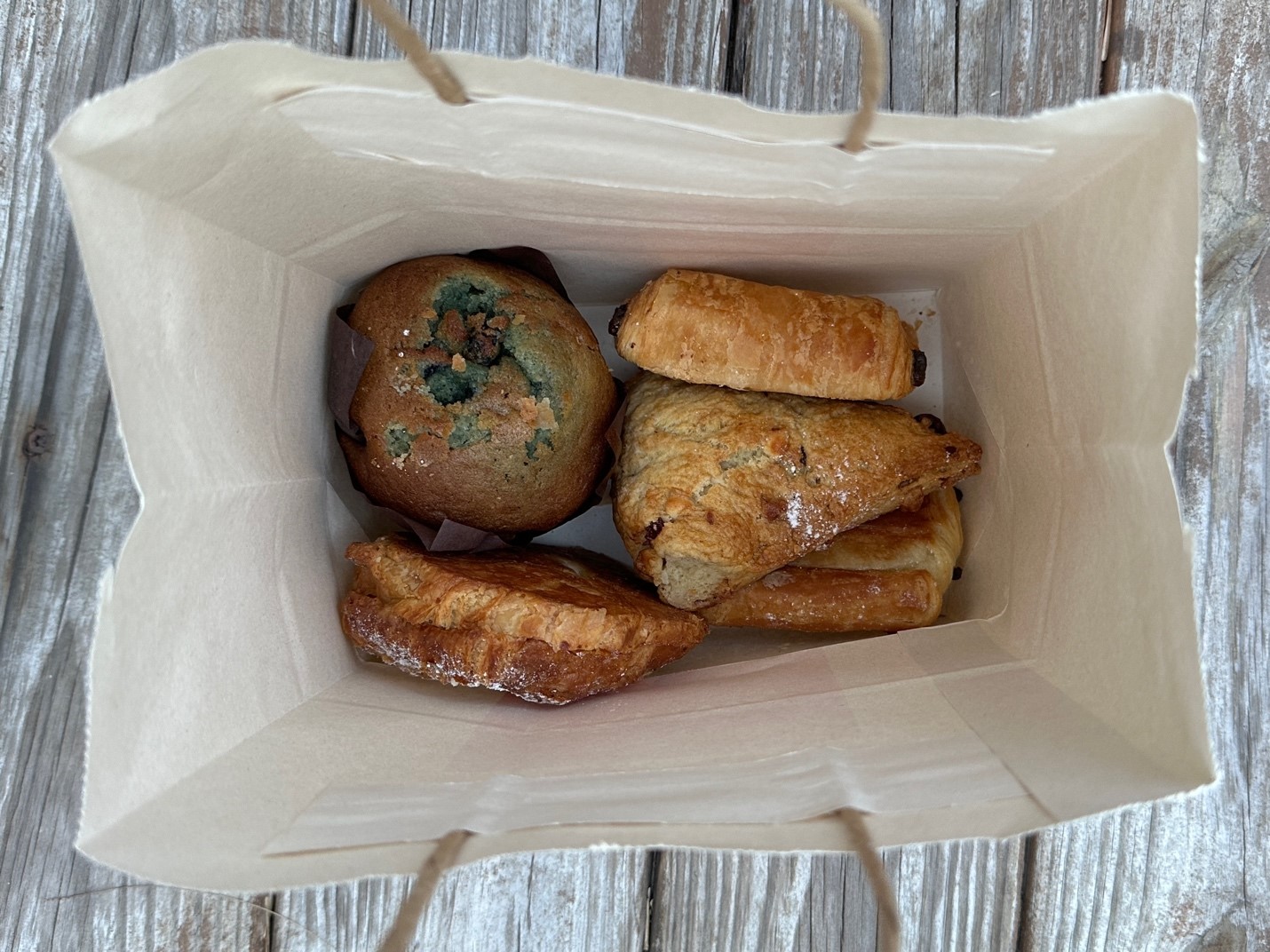By Nadia Colimon Community & Culture Beat Reporter
In the heart of the University of South Florida’s St. Petersburg campus is a quiet revolution against food waste.
The Kahwa coffee shop on campus is in partnership with the app Too Good To Go, offering students and the community surplus food at a discounted price, ensuring that perfectly good pastries, snacks and other food items don’t end up in the trash.
This innovative approach not only helps reduce waste but also provides an affordable option for those looking to enjoy delicious food while supporting sustainability efforts as well as local businesses.
Too Good To Go recently came to the Tampa Bay and Orlando area in November 2023, so this is all new to USF. Most of the food sold by Kahwa are pastries, which cannot be saved and are thrown out at the end of the night.
“We have so much extra at the end of the day; it’s really helpful,” said Julianna Padilla, a Kahwa employee and biology major at USF. “It’s a lot less that I have to throw away and clean up at the end of the night.”
The concept of Too Good To Go is simple yet effective. Users can browse through participating restaurants in the area and purchase a surprise bag of food for a fraction of its original price.
Usually at the end of a restaurant’s business hours, a window of time will be given to pick up the food. It is a smooth and fast process, and it’s always ready for you when you arrive.
I tried the app for myself and picked up an order from the Kahwa on campus. The experience was easy, and the value of food was worth the price
“Too Good To Go saves me so much money on nights when I want to have a cheap meal,” said Emilie Benoit, a recent graduate from USF. “I love that I’m helping make a difference.”
Even though this Kahwa is on a college campus, anyone can take advantage of it.
“It’s pretty diverse. I’ve had a couple of older people come in the first few times I did it, and then I’ve had about two or three different students, people I have classes with, pick up. So, it just depends on the day,” Padilla said.
Whether people use the app to save money or to reduce the amount of food waste, they are contributing to a bigger cause.
“Globally, we have saved more than 304 million meals from waste, which is massive,” said Sarah Soteroff, the head of public relations for Too Good To Go North America. “To get to our goal of ending food waste, we need to call more businesses to join, more consumers to use this more frequently, and have more variety on the app so that people can actually use Too Good To Go on a daily basis.”
This doesn’t solve the food waste problem completely, but it is a start. Food waste brings up another problem: its effects on the environment.
As the world struggles with environmental challenges, every effort to reduce food waste is crucial. According to the United States Environmental Protection Agency, 58% of methane emissions from landfills are attributed to wasted food.
“Using Too Good to Go helps lower the impact of food waste on the environment, while also offering great food and supporting local businesses,” Soteroff said. “Any business can join at any level, whether it’s a convenience store, grocery store, high-end restaurant, or bakery.”
By selling surplus food to customers, small businesses can make extra money that they would have lost if they threw food away.
“We’ve helped businesses earn more than $30 million on food they’d otherwise throw away,” Soteroff said. “Not only are they getting new foot traffic into the store, but they’re also able to reduce what they’ve already paid for which is the investment in that food, and not have to throw it away.”
Whatever the motive, Too Good To Go has sparked a positive change in the way we approach food waste. As more businesses and individuals embrace similar practices of reducing food waste, we move closer to a more sustainable and responsible approach to food consumption, one plate at a time.

